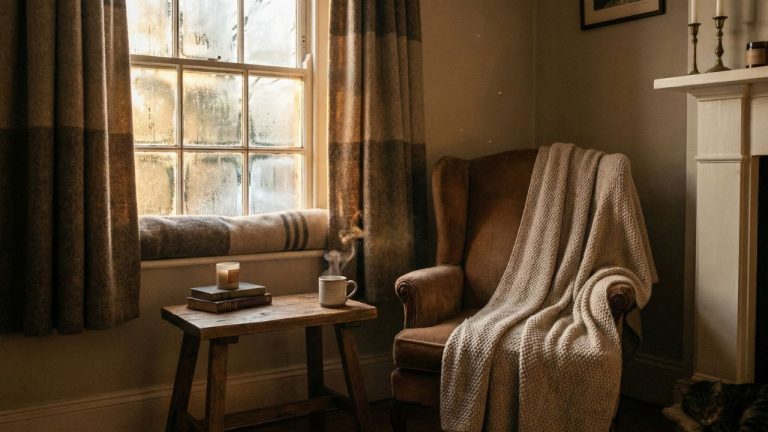Looking for a comprehensive guide on septic tank problems and solutions? Then this article is for you. When facing septic tank issues, DIY solutions can be effective. Start by recognizing signs of fullness like gurgling drains and odors. Pump excess waste every 3-5 years to avoid backups and maintain bacterial balance.
Regularly maintain effluent filters and clear drain blockages with plungers or enzymatic cleaners. Redirect stormwater to prevent oversaturation and monitor bacteria levels for efficient waste breakdown. Utilize DIY tank additives and perform manual treatments like active dry yeast to support healthy bacteria growth.
Implement preventive maintenance practices to keep the septic system functioning at its best. Take the first steps towards addressing septic tank problems effectively.
>>> Click Here for Your Ultimate Septic Tank Problems Solution <<<
Key Takeaways
- Use enzyme drain cleaners for organic matter breakdown.
- Avoid flushing non-biodegradable items down drains.
- Regularly inspect and clean effluent filters.
- Monitor bacterial levels for efficient waste breakdown.
- Implement preventive maintenance with bacterial additives.
Signs of Septic Tank Fullness
Indications of a septic tank reaching capacity can manifest in various ways, including gurgling sounds in drains and sluggish drainage. Additionally, wet patches or unusually lush green grass above the drain field might suggest that the septic tank is full. Foul odors emanating from the yard or drains are another red flag that the tank may be at capacity. Moreover, backups in toilets or drains are common signs that the septic tank requires attention.
To prevent such issues, regular inspections and scheduled pumping every 3-5 years are vital maintenance steps. By adhering to a routine inspection schedule and ensuring timely pumping of the septic tank, homeowners can avoid overfilling and the associated problems that come with it.
Being proactive in monitoring the signs of fullness can help prevent more significant and costly issues down the line. It is recommended to keep a close eye on these indicators to maintain the efficient functioning of the septic system.
Pumping Excess Waste
To effectively manage septic tank problems, it is important to address the accumulation of excess waste by implementing proper waste disposal methods. Establishing a regular maintenance schedule for septic tank pumping every 3-5 years is vital to prevent system failures.
Hiring professional services for tank pumping guarantees thorough removal of accumulated sludge and scum, contributing to the longevity of the septic system.
Proper Waste Disposal
Regularly pumping excess waste from the septic tank every 3-5 years is vital for preventing buildup and maintaining peak system functionality, ensuring a healthy bacterial balance and minimizing the risk of clogs, backups, and costly repairs. Proper waste disposal through scheduled pumping not only sustains the septic tank’s efficiency but also prevents system failures caused by overloading.
Neglecting waste disposal can disrupt the bacterial balance within the tank, leading to inefficiencies and potential environmental hazards. By adhering to a routine pumping schedule, homeowners can greatly reduce the likelihood of septic tank issues, avoid costly repairs, and contribute to the longevity of the entire system.
Prioritizing proper waste disposal is essential for both the performance of the septic tank and the environment it serves.
Regular Maintenance Schedule
Maintaining a consistent schedule for pumping excess waste from the septic tank is essential to ensuring peak system performance and longevity. Septic tanks should typically be pumped every 3-5 years to remove accumulated waste and prevent issues like drain field pipe clogs.
The pumping frequency can vary depending on factors such as household size, water usage, and tank capacity. Regular maintenance is important in reducing the risk of backups, foul odors, and expensive repairs.
Professional pumping services play a significant role in maintaining the health and longevity of your septic system. By adhering to a regular maintenance schedule and considering the specific needs of your household, you can effectively manage your septic tank and avoid potential problems down the line.
Hiring Professional Services
Professionally scheduled septic tank pumping services are crucial for the timely removal of excess waste and sludge buildup to maintain peak system functionality. Excess waste and sludge accumulation can lead to system failures if not addressed promptly. Hiring professional septic tank pumping services guarantees the thorough removal of accumulated solids, preventing potential issues and extending the lifespan of the system.
It is recommended to pump excess waste every 3-5 years to optimize septic tank performance. Professionals possess the necessary expertise and specialized equipment to efficiently empty the tank, promoting proper system operation. Regular professional pumping not only helps prevent costly repairs but also ensures the effective functioning of the septic system, providing peace of mind for homeowners.
>>> Click Here for the #1 Septic Tank Treatment on the Market <<<
Effluent Filter Maintenance
Effluent filter maintenance plays an essential role in ensuring the efficient operation and longevity of septic systems by preventing solids from entering the drain field. These filters serve as a barrier, reducing clogs and extending the system’s life expectancy. Regular maintenance, including cleaning, is crucial to prevent blockages that can lead to backups, foul odors, and costly repairs if left unattended.
It is recommended to inspect and clean effluent filters every 6-12 months to maintain peak performance. Neglecting this maintenance aspect can result in septic system failures and pose environmental contamination risks. By staying proactive with effluent filter maintenance, homeowners can prevent these issues, ensuring that their septic systems operate smoothly and efficiently. Taking the time to care for the effluent filter is a cost-effective way to maintain the overall health and functionality of the septic system.
Clearing Drain Blockages
When faced with drain blockages leading to the septic tank, utilizing a plunger can often dislodge minor clogs effectively. Additionally, enzymatic drain cleaners can help break down organic matter causing blockages without harming the septic system’s bacteria.
If DIY methods prove ineffective, seeking assistance from a professional plumber is advisable to address more severe drain obstructions.
Unblock With Plunger
For efficient clearing of drain blockages, the use of a plunger with a flange is recommended to guarantee strong suction and pressure. When dealing with blockages in your septic tank system, make sure there is enough water in the toilet bowl to cover the plunger’s head.
To unblock the obstruction effectively, create a tight seal around the drain opening with the plunger to maximize its suction power. Apply firm and consistent pressure by plunging up and down vigorously to dislodge the blockage. It is important to repeat this plunging motion several times to break up and clear the obstruction in the drain.
Use Enzyme Drain Cleaner
Enzyme drain cleaners, containing beneficial bacteria that target organic matter within septic systems, are a recommended solution for effectively clearing drain blockages. These cleaners work by breaking down the organic material that causes clogs in septic systems, promoting a healthy balance of bacteria within the tank.
Unlike harsh chemicals, enzyme drain cleaners are safe for both pipes and the environment. Regular use of these cleaners can prevent costly blockages and backups, maintaining the efficiency of the septic system.
To guarantee best results in clearing drain blockages, it is essential to follow the manufacturer’s instructions for application carefully. By utilizing enzyme drain cleaners, users can effectively tackle drain blockages while promoting the overall health of their septic systems.
Call Professional Help
Professional intervention is vital for resolving persistent drain blockages within septic systems. When faced with severe clogs that DIY methods cannot clear, calling in professional help is essential.
Trained experts possess the necessary knowledge and specialized tools to effectively address stubborn blockages in septic systems. By seeking professional assistance, you can prevent further damage to the system and guarantee thorough removal of the blockage.
Ignoring drain blockages or attempting inadequate solutions can lead to system failures, emphasizing the importance of timely and appropriate intervention by professionals. Save time and safeguard your septic system by entrusting the clearance of drain blockages to experienced professionals who can handle the task efficiently and effectively.
Stormwater Diversion
To effectively mitigate potential septic system malfunctions caused by excess stormwater, implementing proper stormwater diversion techniques is vital. When it comes to protecting your drain field and preventing saturation that can lead to system overload and septic system malfunctions, stormwater diversion plays an important role.
Here are four key steps to ponder:
- Redirect Runoff: Make sure that stormwater runoff is redirected away from the drain field to prevent oversaturation, which can compromise the system’s efficiency and longevity.
- Prevent Flood Damage: Excess stormwater can flood the drain field, causing damage and ultimately leading to costly septic system malfunctions. Proper diversion techniques can help evade these issues.
- Maintain Balance: Properly diverting stormwater helps maintain the equilibrium within the septic system, ensuring that it functions effectively and efficiently.
- Cost-Effective Protection: Implementing stormwater diversion techniques is a cost-effective way to prevent repairs and system failures, saving you money in the long run.
Regular inspections and maintenance of stormwater diversion systems are essential to make sure they continue to protect your septic system effectively.
Bacteria Level Monitoring
Regular monitoring of bacteria levels in the septic tank is essential for ensuring efficient waste breakdown and the overall health of the system. Bacteria levels within the septic tank can vary due to factors such as usage patterns, the introduction of additives, and environmental conditions.
Low levels of bacteria can impede the digestion of waste, potentially leading to system clogs and backups. Conversely, high levels of bacteria may indicate an excessive influx of organic matter, overloading the system’s capacity to break down waste effectively.
To maintain a properly functioning septic system, it is vital to strike a balance in bacteria levels. Periodically testing the bacteria levels in the tank can provide valuable insights into the system’s performance and help preemptively address any potential issues.
DIY Tank Additives
Incorporating DIY tank additives can enhance the efficiency and performance of septic systems by supporting the growth of beneficial bacteria and aiding in waste breakdown. When it comes to maintaining a healthy septic tank, using the right additives is essential.
Here are some essential tips to keep your septic system in peak condition:
- Utilize active dry yeast: Adding active dry yeast or rotten tomatoes every three months can help nourish the beneficial bacteria in the septic tank, promoting efficient waste decomposition.
- Watch what goes down the drain: Avoid sending trash, excessive fats, oils, and harsh chemicals down the drains to maintain a balanced bacterial environment within the septic tank.
- Limit garbage disposal use: Overloading the septic system with solids from a garbage disposal can disrupt the bacterial balance, so it’s best to limit its usage.
- Opt for natural ingredients: Choose additives made from natural ingredients to promote bacterial growth and aid in breaking down waste effectively.
Manual Treatments
For effective maintenance of septic systems, manual treatments play an essential role in enhancing the performance and longevity of the tank. One effective manual treatment involves using a mixture of active dry yeast and warm water to boost beneficial bacteria within the septic tank.
Implementing a maintenance routine of flushing a cup of active dry yeast every 3 months can greatly aid in the breakdown of waste, promoting a healthier environment within the tank. It is important to avoid harsh chemicals that can disrupt the natural bacterial balance.
Instead, opt for natural ingredients like rotten tomatoes, which support bacterial growth without harming the system. Regularly inspecting the tank components for leaks, damage, or signs of malfunction is also crucial in maintaining a well-functioning septic system.
By incorporating DIY treatments such as using active dry yeast and avoiding non-biodegradable items, you can actively contribute to the longevity and efficiency of your septic tank.
| Manual Treatments | Benefits |
|---|---|
| Active Dry Yeast | Boosts beneficial bacteria |
| Warm Water | Aids in waste breakdown |
| Maintenance Routine | Promotes septic tank health |
| Natural Ingredients | Supports bacterial growth |
| Regular Inspections | Identifies issues early |
Preventive Maintenance
Implementing a proactive maintenance strategy is essential for preserving the peak functioning of septic systems over time. To guarantee the longevity and efficiency of your septic tank, consider the following preventive maintenance measures:
- Regularly treat the septic tank with bacterial additives: Maintaining a healthy microbial environment is vital for breaking down waste effectively and preventing clogs.
- Avoid flushing non-biodegradable items down drains: Non-biodegradable items can lead to clogs and system malfunctions, impacting the overall performance of the septic system.
- Schedule routine inspections and pumping every 3-5 years: Regular inspections and pumping help prevent costly repairs by identifying issues early and ensuring proper maintenance.
- Implement water conservation practices: Conserving water reduces the strain on the septic system, helping it operate efficiently and effectively over time.
Frequently Asked Questions
How Do You Make Homemade Septic Tank Treatment?
To create DIY enzyme treatments for septic tanks, combine active dry yeast, warm water, and sugar. Enhance natural bacteria levels with rotten tomatoes blended and added to the tank. These homemade solutions offer an eco-friendly approach to septic maintenance and odor control.
What Eats Sludge in a Septic Tank?
Bacteria colonies and natural enzymes are instrumental in the breakdown of sludge in a septic tank. These microorganisms feed on organic matter, aiding in microbial digestion. Maintaining a balanced microbial ecosystem supports efficient sludge decomposition and system functionality.
What Does Baking Soda Do to a Septic Tank?
Baking soda benefits septic tanks by aiding in pH balance maintenance, acting as a natural deodorizer to neutralize odors, preventing clogs by breaking down organic matter, supporting waste breakdown, and enhancing overall system efficiency.
What Is a Home Remedy for Septic?
For home septic tank maintenance, consider utilizing natural remedies like a vinegar solution combined with baking soda to promote healthy bacterial growth. Enzyme treatments can also aid in breaking down waste. These DIY methods support system longevity.
Conclusion
To sum up, maintaining a septic tank requires regular monitoring, proper maintenance, and occasional treatments to prevent issues such as blockages and backups.
By following the step-by-step DIY solutions outlined in this article, homeowners can effectively address common septic tank problems and guarantee the proper functioning of their system.
Taking proactive measures and staying on top of maintenance tasks will help extend the lifespan of the septic tank and avoid costly repairs in the future.





